WATER SMART BOZEMAN.
Spring/Summer 2023
WATER SMART PLANTING GUIDE for
the Bozeman Area
DOING ONE THING MAKES A DIFFERENCE. FIND OUT MORE AT BOZEMANWATER.COM


WATER SMART BOZEMAN.
Spring/Summer 2023
the Bozeman Area
DOING ONE THING MAKES A DIFFERENCE. FIND OUT MORE AT BOZEMANWATER.COM

What does Water Smart Bozeman mean? It means:
• Understanding where our water comes from
• Recognizing that there is a limited supply
• Acting to conserve it
At the City of Bozeman, we’re dedicated to providing the tools and resources for you to make water smart decisions both inside and outside your home. With 50% of Bozeman’s summer time water use going to lawns and landscaping, the easiest and best place to start is right outside your door.
Use this guide to get water smart — with tips for your ground and your grass, as well as irrigation insights and yard makeover inspiration. Then, take advantage of the City of Bozeman’s water conservation incentives to transform your yard from thirsty to thriving.
Bozeman enjoys extremely high-quality water, but quantity is limited. With only 16 inches of average annual precipitation, Bozeman is considered semi-arid and drought-prone. For more about drought, see page 5.
Bozeman relies on snowpack for its water supply, with 80% coming from snowmelt in the Gallatin Range, which feeds Bozeman Creek and Hyalite Creek. The other 20% comes from a developed spring at the headwaters of Lyman Creek in the Bridger Range.
The 2021 drought declaration taught us a lot about shifting climate patterns that affect our reliable water supply. More moisture is arriving as rain instead of snow, and warmer temperatures are expected, leading to earlier peak flows and drier summers. Without water conservation, Bozeman could be facing a water shortage within the next 10 years. The City’s Water Conservation Division is dedicated to guiding residents on how they can save water by using it more efficiently, creating the single largest source of water for Bozeman’s future. For more about drought, see page 5.
We can’t make more water. Taking action now to conserve what we have is the cheapest, most expedient, and environmentally-friendly way to thrive through drought and ensure a reliable water supply for the future. All it takes to help is doing one thing to reduce your water use.
In big ways and small, we can all do one thing to conserve Bozeman’s limited water supply. When it comes to reducing water use in your yard, maybe you already have a green thumb. Your ‘one thing’ might mean overhauling your entire landscape with drought-tolerant plants. Or maybe you’re a little green behind the ears in your yard. Your ‘one thing’ could be as simple as calling for a free sprinkler system assessment.
Whether big or small, know that by doing one thing, you’re making a difference. Plus, your yard, your wallet, and your thumb will all get a little more green.
Saving water also saves money. Cash in on your water smarts through our many rebates, offers, and incentive programs. Start with our Landscape and Sprinkler System Rebate Program (page 15), then check out all of the incentives we offer — both residential and commercial — at bozemanwater.com.
The City of Bozeman has created a variety of community water conservation programs for everyone to participate in together. Here are a few:

· Sprinkler System Assessments. Assessments provided throughout the summer for FREE, go to page 13 for details.
· Shower Better Month. Join us in October, and look for information on how to pick up a FREE high efficiency showerhead for your shower.
· FREE Landscape Classes. Find inspiration each spring and learn how to transform your yard into a water smart landscape.

· FREE Kits*. Available through the City of Bozeman. They’re free, but they go fast, so contact us today.
· Kids Activity Kits. Pick up a Shower Better or Brush Better Kit, that includes kids activity sheets to make conservation fun and educational.
· Summer Savings Tool Kit. FREE kit with tips and tools to save water on your outdoor landscape. Available all summer, see page 10 for details.
· Fix-A-Leak Kit. FREE kit with basic items and instructions to find and fix leaks inside your home.
· Register for Dropcountr on your computer or download the app to track your water use and find more ways to save around your house throughout the year. See back cover for more information.
You can be water smart anywhere — indoors, outdoors, at home, or at your business. While this guide is dedicated to tips for outdoor residential water conservation, the City has also developed a Water Smart Indoor Guide that can be accessed on the water conservation webpage along with other resources. Visit bozemanwater.com today.

The City of Bozeman is leading by example with these water smart efforts. Check out the drought-tolerant demonstration gardens webpage at bozemanwater.com to view an interactive map with planting detail for each garden listed below.

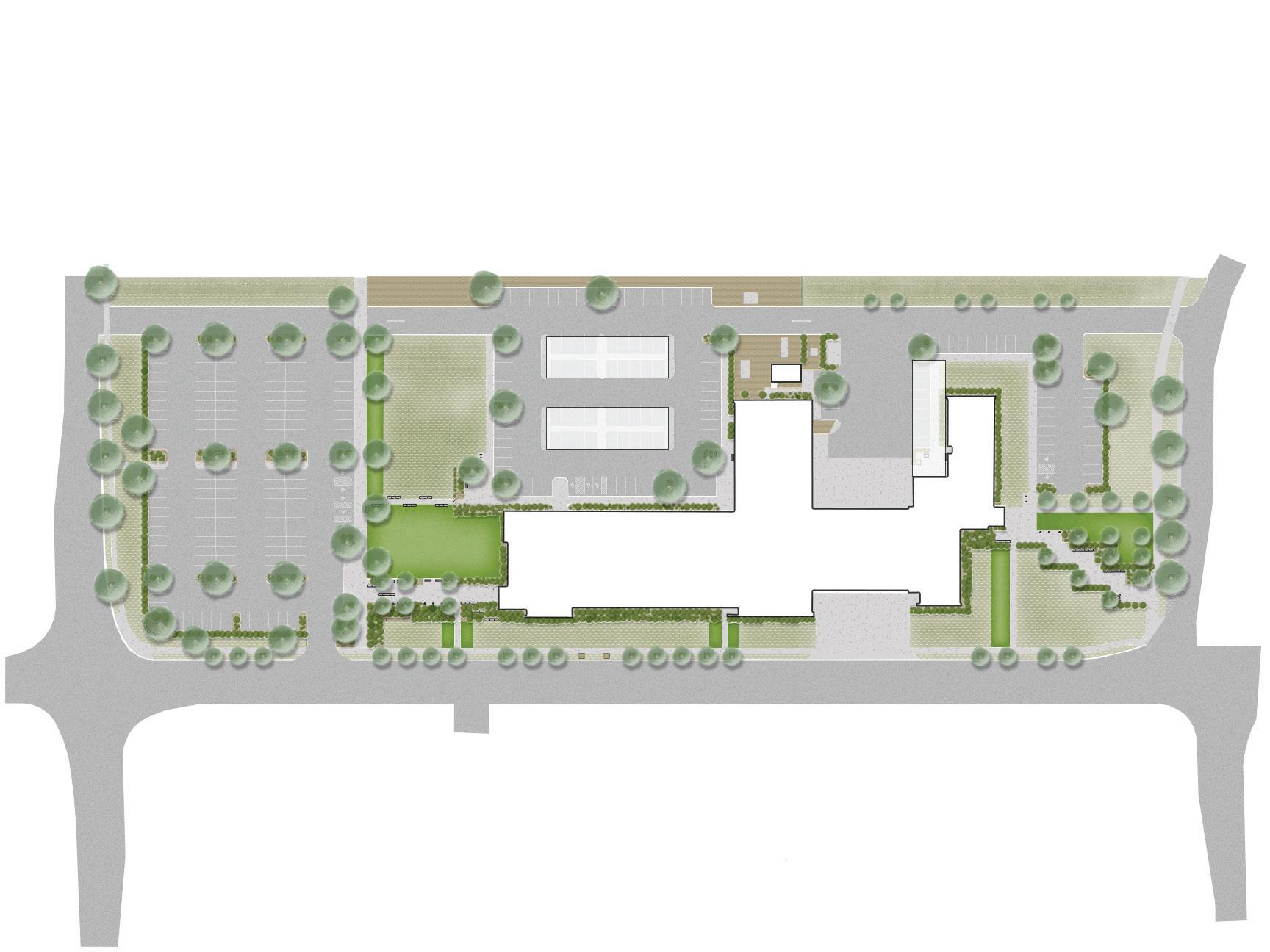



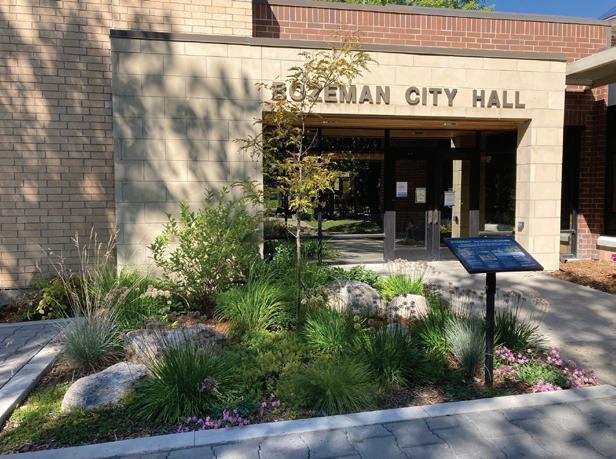
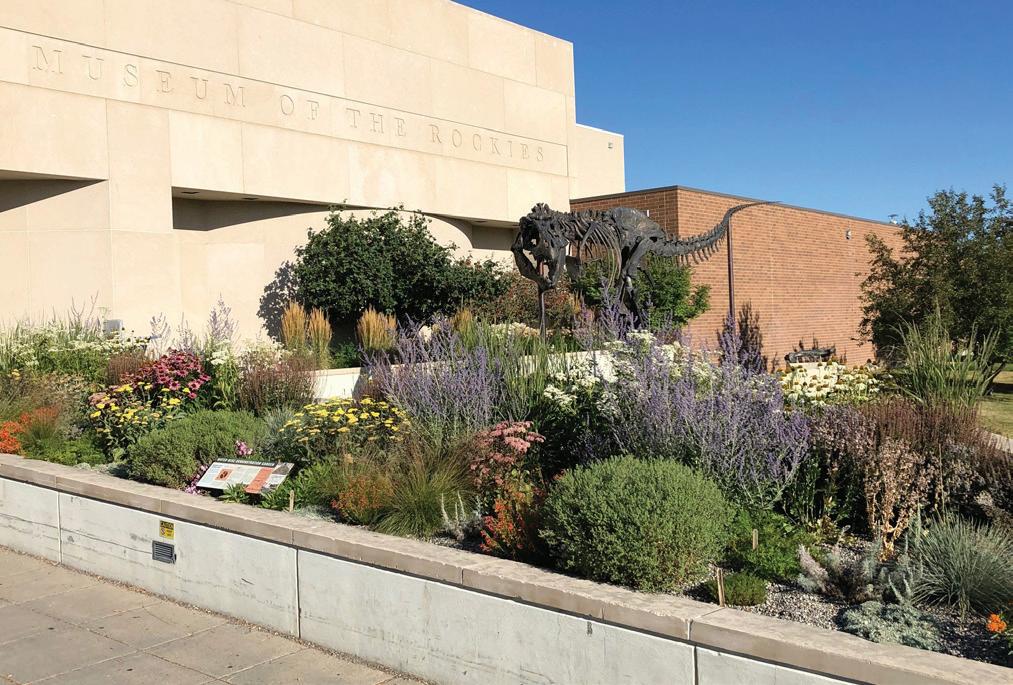
Visit this summer for inspiration and ideas.
The City of Bozeman has partnered with MSU and the Museum of the Rockies to showcase efficient irrigation techniques and a variety of water smart and native, drought-tolerant plants. Educational signs and brochures provide information on the maintenance needs of waterwise plants, drip irrigation, and the design approach for each bed. Stroll around the gardens for inspiration, gather information and pick up a plant list to create your own water wise garden!
The City of Bozeman is inspiring change with drought-tolerant plants and innovative stormwater treatment, right in front of City Hall. Once established, the drought-tolerant plants live off naturally-occurring precipitation, while the water smart plants only need occasional supplemental watering. To find out more about these plants, see our plant guide beginning on page 20.
Drought is a very real thing here in Bozeman. We are a semi-arid and drought prone area, with an average of 16 inches of precipitation annually. Additionally, Bozeman’s water supply is limited and relies on snowpack as shown on page 2. In the future, warmer temperatures may lead to more moisture arriving as rain instead of snow, earlier spring snowmelt and peak flows and drier summers.
Reduced snowpack during our winter months could result in insufficient water supplies for spring, summer and into the following fall and winter. We want you to be prepared and in the know on Bozeman's drought conditions.
The City's 2022 Drought Management Plan provides a framework for monitoring drought conditions, implementing drought stages and recommending water conservation efforts throughout the community. As we saw in 2021, when a drought is declared in the City, residents
DROUGHT WATCH - STAGE 1
Drought surcharge: Expect a rate increase of 0-21%.
What you need to do*:
· Reduce your water usage by 10%**
· We encourage everyone to pitch in and look for ways to save water in and around your home and business.
· Reducing outdoor water use is a great place to start.
DROUGHT ADVISORY - STAGE 2
Drought surcharge: Expect a rate increase of 10-39%. What you need to do*:
· Reduce your water usage by 20%**
· Outdoor watering may be limited to two days per week.
BOZEMAN DROUGHT METER*
Find
throughout the summer. You can also gauge conditions at bozemanwater.com.
and businesses may be required to take action to ensure that we maintain a healthy water supply at every stage.
Thanks to everyone who did their part to reduce water use during the 2021 drought. Together, we reduced city-wide water usage by 20%, and ensured that the city had adequate supplies during this time of shortage.
Even when we aren’t in a drought stage, conserving water is our best defense against drought. Doing even one thing can make a difference. Visit www.bozemanwater.com and click on the water conservation button for information about:
· Indoor rebates on WaterSense® toilets, showerheads, and clothes washers that meet the CEE Tier specifications.
· Outdoor rebates on sprinkler systems and plants (see page 15 and 20 in this guide for more information).
DROUGHT WARNING - STAGE 3
Drought surcharge: Expect a rate increase of 20-100%. What you need to do*:
· Reduce your water usage by 30%**
· Lawn watering may be banned.
· Watering existing trees, shrubs, and flower gardens may be limited to certain times and only allowed with a hand held hose or a low-volume, non-spray device.
· Water fountains and filling of private swimming pools may be banned.
· Community gardens, athletic and playing fields will have assigned watering days and schedules.
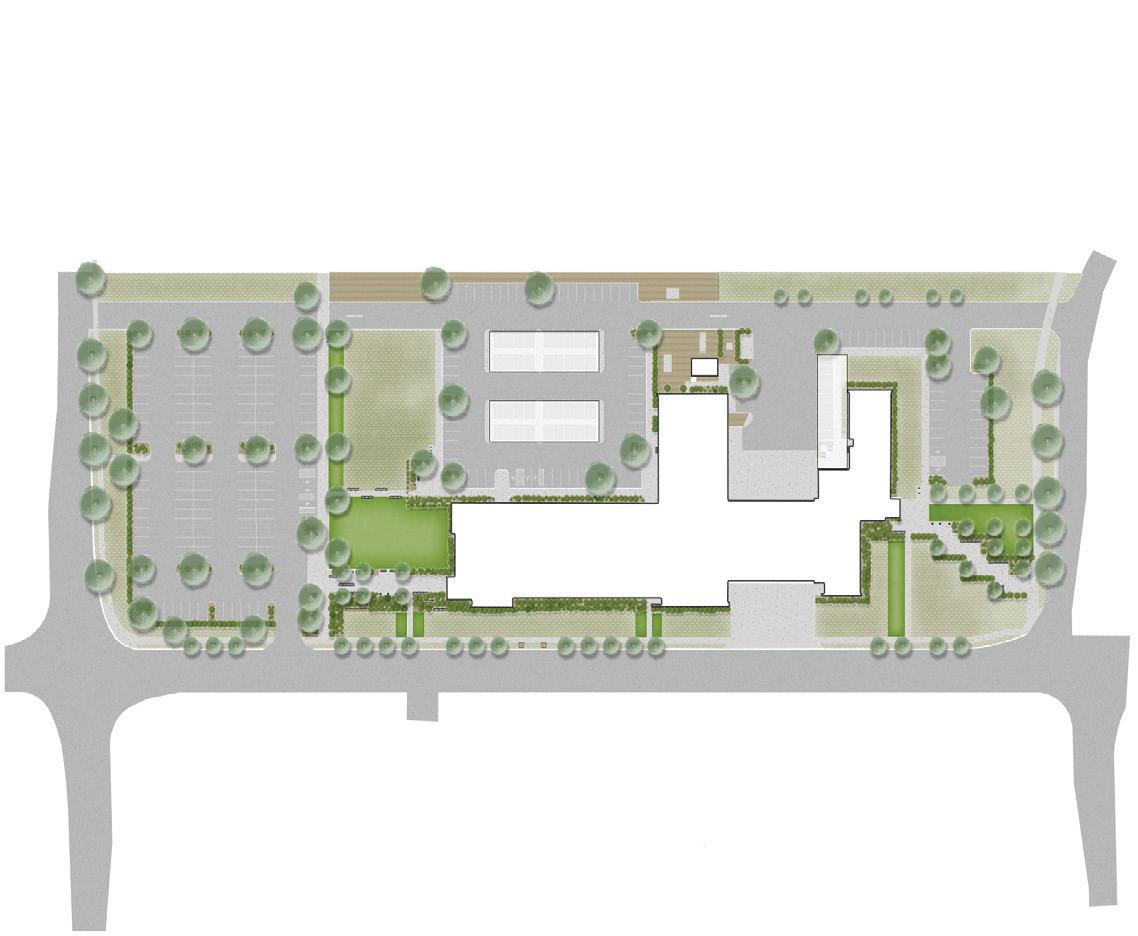
DROUGHT EMERGENCYSTAGE 4
Drought surcharge: Expect a rate increase of 25-200%. What you need to do*:
· Reduce your water usage by 40%**
· Outdoor watering is not allowed.
· Use water for essential uses only.
N O RMAL WATCH ADV SORY WARNING EMERGE N C Y * Visit www.bozemanwater.com and click the Drought Management button for details on drought restriction guidelines for residences, businesses, and the City of Bozeman. ** The average Bozeman resident (one person) uses 160 gallons of water per day in the summer. Reducing your water use by 10% means using 16 less gallons/day; 20% = 32 gallons/day; 30% = 48 gallons/day; 40% = 64 gallons/day.
Caring for the dirt below your sod and planting beds is the first step to both a healthier yard and water savings. So take stock of your soil, show it some love with amendments like DIY compost, and mulch your way to a happy, water-friendly landscape.

Gardeners worth their salt know that lawns and landscapes depend on good dirt. Knowing your soil type means knowing how to improve it — and that’s the secret to efficient watering and gorgeous landscapes.
There are three common soil types: clay loam, sand loam and silt loam.
· Clay loam is sticky and easy to shape. It often requires sand and organic matter to improve its quality. Clay is the gluey “peanut butter” of soils, but it can dry to a hard, almost impermeable surface.
· Sand loam is visibly granular with no stickiness. It’s gritty, like sugar. Most sand loam will break up easily even when wet.
· Silt loam is the happy medium between clay and sand loam. Its granules are smaller than sand but not as small as clay. It is smooth like clay but breaks apart like sand. This allows for just the right amount of water absorption and mineral retention.
Guess what Bozeman is built on? Mostly, clay loam. This heavy, fine soil prevents water from soaking in easily which can lead to water waste. If you water this type of soil too fast, the water pools and runs off into the street and storm drains, picking up all kinds of contaminants. This dirty water can end up in our streams.
In other areas of town, the soil can be extremely porous. Bottom line: you need healthy soil for a healthy garden, so it pays to know your soil and water accordingly.
To find your soil type, place approximately one tablespoon of soil in the palm of your hand. Add water one drop at a time and knead the soil to break down all the larger pieces. You can identify your soil when the consistency feels like putty. Refer to the soil types listed above to discover yours. To maximize the health of your landscape, you'll want at least 4"-6" of topsoil before your shovel hits subsoil. Visit bozemanwater.com and click the water conservation button to learn how to determine your soil type by using ‘The Jar Test’.
Good soil has particles of varying sizes and shapes and organic materials which retain water, provide nutrients, and allow water to get to plant roots.
Once you know your soil type, make it even better:
1. Begin with deep spading, plowing or rototilling to a depth of about six inches to break up compacted soil.
2. While tilling, add organic matter such as compost or shredded leaves to beef up nutrition.
3. Add soil amendments, as needed, for your type of soil.
4. Aerating your turf grass soil can help alleviate compaction and help air, water and nutrients reach your lawn's roots. For more information about soil amendments, click on the Water Conservation button at bozemanwater.com
Compost is decomposed organic material, and plants love it. You can purchase it or make it yourself from leaves, lawn clippings, vegetable waste and coffee grounds. Compost improves air circulation in clay soils and nutrient retention in sandy soils. Plus, healthy plants in a well-composted landscape bed don’t need to be watered as frequently.
Most soils can be improved by adding compost, which helps retain water in the soil and at plant roots. Compost can be added to flower beds and gardens and before installing sod or planting trees and shrubs. Compost can also be used as a top dressing on existing lawns.
Mulch holds water hostage. Most water evaporates before it ever reaches plant roots, but the addition of a 2- to 3-inch deep mulch barrier will help your trees, perennials and shrubs keep water right where it belongs.
· Mulch helps hold in soil moisture.
· It helps protect soil from erosion on steep slopes.
· A well-mulched bed keeps weeds at bay.
· Organic mulch (wood chip, straw, etc.) provides the soil with free nutrients.
· Mulch insulates and regulates soil temperature. Hot summer days won’t scorch your plants, and those trees, shrubs and perennials will stay cozy during cold, fall evenings.
· Adding mulch can help create a polished appearance to your landscaping beds.
1. Before adding mulch to bare soil — especially for newly planted shrubs and perennials — make sure the soil that surrounds the plants’ roots is moist. This hydration kick-start will ensure roots do not dry out when rainfall is lacking.
2. Mix all of your preferred mulch components together before spreading it onto the soil. This ensures a balanced interaction with air, moisture, light and nutrients.
Follow a recipe! Like baking cookies, composting requires that you know what ingredients, and how much of them, are needed.
Ingredient list:
· Materials: be sure to add the brown and the green! The ‘brown’ materials, or sources of carbon in the compost, are things like dead leaves, wood chips, and cardboard. The ‘green’ materials, or sources of nitrogen, are things like lawn clippings, vegetable waste and coffee grounds. The C:N (carbon to nitrogen ratio) should be about 30:1.
· Microorganisms: they are the cooks in the kitchen and do the dirty work! You can add worms, manure, or starters to get things going.
· Oxygen: needed for the microorganisms and speeds up the process.
· Water: the compost pile should be damp, like a wrungout sponge.

All of these ingredients work together to get things cooking!
3. Rake the full depth of a mulch layer at least once per season. Some mulch, when regularly wet and exposed to extreme temperature changes, can grow mold if left unturned.
4. Keep the depth of your mulch between two and three inches. Adding too much mulch could risk the development of crown disease due to excess heat and moisture, so only add mulch to a planting bed if there is less than three inches in depth (after applying water). On the other hand, having too little mulch won’t properly regulate temperature or control plant water stress, and the weeds may start creeping in.
In partnership with Gallatin County, the City of Bozeman is providing free mulch to residents. The City’s Forestry Division will maintain a pile of free mulch at Gallatin County Regional Park (entrance off Oak St.) and the Gallatin County Fairgrounds (entrance off Oak St. near recycle bins). Free mulch will be available throughout the summer.
Gone are the days of thirsty turf from fence line to fence line. With all we know about drought-tolerant grass and plants, Bozemanites are looking at their yards with new potential. Want a veggie garden? Or deer-tolerant shrubs? Maybe you want to attract butterflies? Or do you need some soft turf for the neighborhood badminton tournament? There are water smart solutions for every situation. So take a look out your window and envision the possibilities.
Choosing to landscape with drought-tolerant plants can cut your outdoor water use by 75%. Watering aside, drought-tolerant plants simply make outdoor gardening and landscaping easier. They need less maintenance, require no pesticides, and less fertilizing. Not to mention, switching to drought-tolerant plants can increase the value of your home. Thinking you want more drought-tolerant plantings and less turf? Check out the City’s Turf Removal Rebate Program for cash back when you remove turf from your landscape (pre-approval is required before starting your turf removal project).
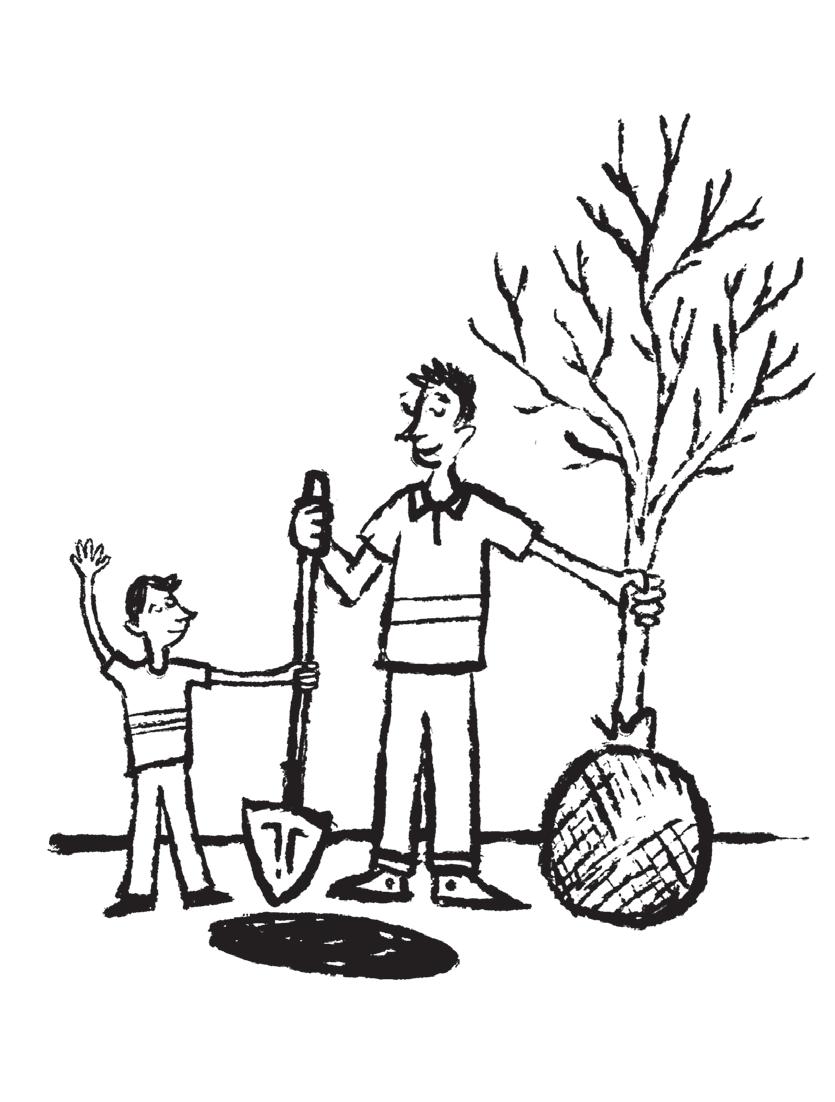
Once you’ve identified your yard’s water smart potential, check out the complete list of drought-tolerant and water smart plant inspiration on page 20. Here are a few other water smart possibilities to ponder:
By choosing low water use plants and developing a healthy garden you can still grow a variety of edible plants while being water smart.
· Plants with shorter growing seasons use less water by reaching maturity earlier than other plants with longer growing seasons. Some examples include radishes, beans, kale, lettuce, squash, and some tomato varieties.
· Plants that develop deep root systems can draw moisture from deep in the soil long after the surface has become dry — rhubarb and asparagus are great examples.
· Don’t choose space hogs like broccoli and cauliflower that span over wide areas, require more water and don’t produce as much.
· Herbs, herbs, herbs! Many herbs are very hardy and don’t require a lot of water. Some of the best drought-tolerant herbs include: Thyme, Oregano, Rosemary, Sage, Mint, and Chives.
Add a little life to your yard by including bee and butterfly-friendly plants in your landscape plans. It’s estimated that pollinators are responsible for every one in three bites of food we eat. Planting water smart species that naturally attract the buzz and flutter will not only add color and interest to your yard, it will help the sustainability of our food system. Want more inspiration? Visit Bozeman’s Pollinator Garden at Langhor Park, just north of the intersection of South Tracy and West Mason.

Kentucky bluegrass, a common cool season grass installed in the Gallatin Valley, requires significant supplemental irrigation throughout the growing season to maintain a green appearance — especially in July and August when conditions are exceptionally hot and dry. If you are looking to install a water efficient landscape, consider installing drought-tolerant seed or sod blends in high traffic areas to drought-proof your landscape and reduce outdoor water use.
Tall fescue blend sod is a drought-tolerant cool season grass that requires less supplemental irrigation and overall maintenance than Kentucky bluegrass. Fescue blends tolerate heavy traffic, clay soils, are resistant to disease, and need less water to stay green.
Seeding your landscape is more cost effective than laying sod, and offers greater flexibility in choosing grass varieties to match your growing conditions and landscape values. Seeding with droughttolerant grasses also promotes deeper root growth because the grasses germinate and root in the same place, undisturbed.
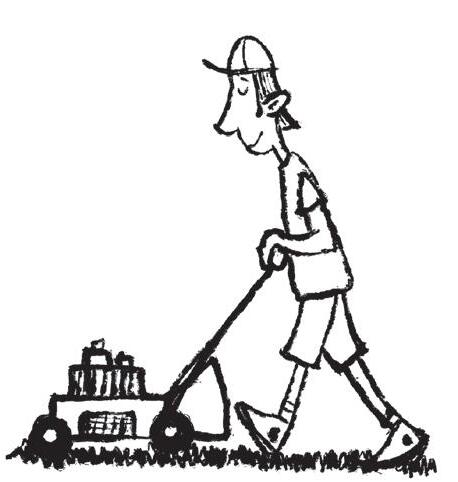
Things to consider before installing Tall fescue blended sod:
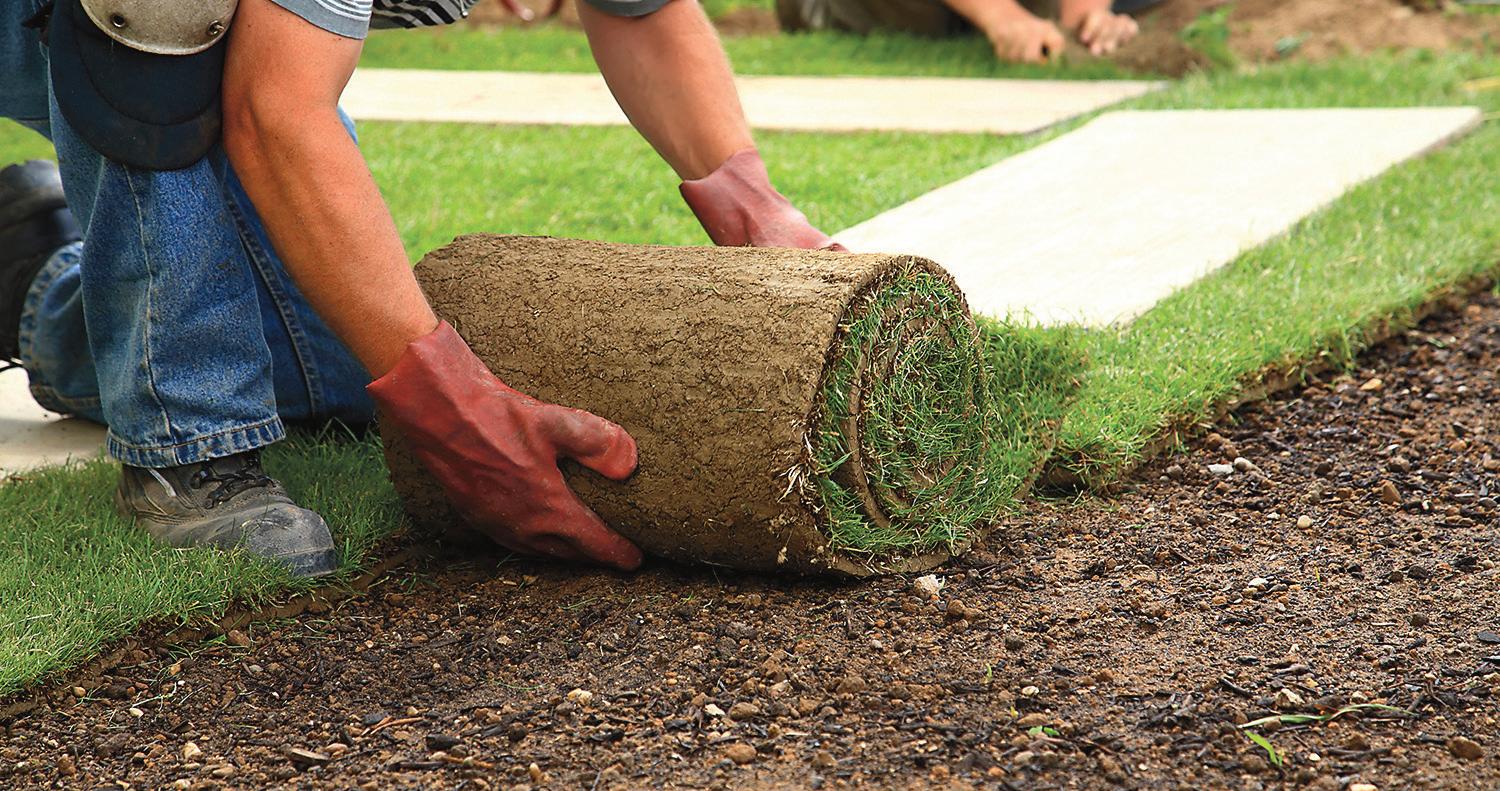
· Each fescue blend sod is unique so keep an eye on your lawn health to make sure it is receiving the proper amount of water. Be aware, overwatering Tall fescue blend sod can lead to disease that can disrupt your lawn’s health over time.
· Tall fescue blend sod should be mowed high — about 3” in height to maintain optimal color and resiliency.
· Tall fescue blend sod is tolerant of sun and shade and generally outperforms Kentucky bluegrass in shady areas.
· Fescue has an extensive root system which allows for increased drought resilience if you have proper soil depth.
· Tall fescue may require overseeding in the fall after a stressful hot, dry summer.
Check out the fescue blend seed grass installed in the N. 27th medians and at the Bozeman Public Safety Center to see how it compares to thirsty Kentucky bluegrass.
After establishment, some drought-tolerant seed mixes can survive without supplemental watering (except for extremely hot and dry conditions) and do not require regular mowing. Some options for this include:

· Sheep fescue ‘Covar’
· Fine fescue blends (hard, red and sheep fescues)
· Tuft Type Tall fescue
· Native Streambank Wheatgrass
If you are seeking a more natural look for landscaped areas that are not exposed to traffic, bring the beauty of Montana’s natural environment to your own yard by seeding with a native droughttolerant seed mix interspersed with wildflower seeds. Once established, they can survive without supplemental water and can be left to grow tall all season long.
Did you know that the City has implemented permanent watering restrictions that apply to all residents who irrigate with City water (see page 11)? Identifying watering needs of your landscape and the most efficient ways to apply water to it can help set you on your way to being water smart. In this section, you'll learn about efficient watering methods and how to assess your irrigation system so that you can make the most of every drop.
WATERING
LAWNS
To efficiently establish new lawns, water as needed for up to 21 days. After 21 days, routine watering can be reduced to three days per week or less, between 4am and 8am.
TREES, SHRUBS, AND PLANTS HAVE DIFFERENT WATERING NEEDS THAN LAWNS
· Trees have deeper root zones and require more water than turf grass, shrubs and perennials. But, tree root zones also store lots of water, so they can be watered less frequently.
· Tree roots receive water from soil, not trunks or leaves. Deliver water throughout the soil beneath the tree's canopy to reach the entire root system.
· Shrubs and perennials prefer deep but infrequent watering.

· Cluster plants with similar watering needs together in the same irrigation zones to avoid over and under watering.
MULCH HOLDS H2O HOSTAGE
A 2 to 3-inch mulch barrier around trees, shrubs, and perennials helps them hold onto water. For more information on mulching, see page 7.
Drip systems deliver water directly to landscape plants, minimizing water lost to evaporation. They are also great for mulched beds because water soaks into the soil without disturbing the mulch.
TREE WATERING TIPS
Watering needs:

· Trees typically need 10 gallons of water for every inch of trunk diameter.
· Water trees 1 or 2 times per week when conditions are hot and dry (June - August).
Watering methods:
· Set up a drip irrigation line that spirals around the circumference of the tree's dripline (edge of the leaf canopy) to target the roots.
· Purchase a slow release watering bag or contact the Water Conservation Division about getting one for free! Slow release tree watering bags simply need to be filled once a week for establishing trees. They release water directly into the tree’s root zone over several hours.

Each lawn’s water requirements are different, depending on the soil, sunlight, and other landscaping factors. To find out how much water your sprinkler system delivers, all you need is a few empty tuna cans.
1. Place 12 flat bottomed cans (tuna or cat food cans work) evenly across your lawn in a grid pattern around sprinkler heads.
2. Run your sprinklers for 15 minutes.
3. Use a ruler to measure the depth of the water (in inches) in each can and write it down.
4. Add up the amounts from all cans and divide by the number of cans. This number is the average amount of water your sprinkler delivers in 15 minutes.
5. Use the chart below to determine what your total watering time should be to apply 1" of water to your lawn, based on the tuna can test. Applying 1" of water per week to your landscape should be enough to keep your lawn healthy during the heat of the summer. For more sprinkler scheduling guidance, refer to the chart on the right.
In order to conserve water on an ongoing basis, the Bozeman City Commission approved permanent outdoor watering restrictions for the use of overhead spray irrigation effective June 16, 2022.
Your watering schedule is based on your physical property address and applies to residences and businesses using City water for irrigation.
· Even number physical addresses: Tuesday, Thursday, Saturday
· Odd number physical addresses: Wednesday, Friday, Sunday
· Watering is permitted on your allowed watering days before 10am and after 8pm.
Exceptions to these restrictions apply for the use of low-volume drip irrigation, and hand watering with a watering can or hose with shut off nozzle. These watering methods are permitted any day at any time for the following plant types only:
· Trees
· Shrubs
· Perennials
· Food gardens
· Flower beds
· Planters
AVOID WATER WASTE WITH A CYCLE AND SOAK SCHEDULE
A cycle and soak watering schedule will slow down water application and minimize water wasted to runoff.
‘Cycle and soak’ is a term for breaking up the total run time for one zone into two or three shorter run times by applying multiple start times to your schedule.
Example: A 20 minute run time on a scheduled watering day would translate into 2 cycles of 10 minutes, with at least 45 minutes of soak time between cycles.
Interested in a customized watering schedule? More info here
The below schedule is a recommended watering schedule for when the City is NOT in a declared drought. The below daily run times are recommended for turf grass irrigation based on a three day per week watering schedule. It is recommended that the cycle and soak watering method be utilized. See page 12 to identify the sprinkler head types in your sprinkler system.
Watering Month Standard Spray Pop-up Nozzle Rotor Rotating Pop-up Nozzle
May 5 minutes 20 minutes 16 minutes
June 7 minutes 32 minutes 26 minutes
July 11 minutes 42 minutes 32 minutes
August 9 minutes 34 minutes 28 minutes
September 6 minutes 24 minutes 20 minutes
Monitor your grass! If areas of stress appear just before the next watering day begins, your watering times should be about right. This will save our water resources and your money without seriously affecting your lawn’s appearance. Your irrigation system may require more or less run time based on its performance, water output, soil health, sun vs. shade, and weather conditions.
A healthy, water smart lawn is dependent upon having the correct arrangement of sprinkler heads for your space. Knowing the size of the area you wish to water and other environmental factors of your yard will help guide you toward the right sprinkler head for your project.



Here’s a quick comparison of the three types of sprinkler heads most often used:
ROTORS
· As the name suggests, delivers water in a rotating jet.
· The slowest delivery of water — about 0.5 inches of water per hour.
· Best used in larger areas, 16’-40’ wide.
· Tends to lead to less run-off and evaporation than spray heads.
· You can adjust the throw distance and arc with a hex wrench or flathead screwdriver.
· Interchangeable rotor nozzles are situated internally and vary in throw distance abilities.
STANDARD SPRAY POP-UPS
ROTATING/ MSMT POP-UPS
· Best used for smaller areas, 4’-15’ wide.
· Fixed nozzle heads are most common, though some manufacturers offer variable arc nozzles (VAN). A mix of both fixed and VAN nozzles in a zone can lead to uneven water distribution. VAN nozzles can use up to three times the amount of water when compared to fixed nozzles.
· Speciality nozzles are available for tricky spaces (narrow strips, corners, short radius).
· The rapid delivery of water — 1.5 to 3 inches of water per hour — can lead to runoff.
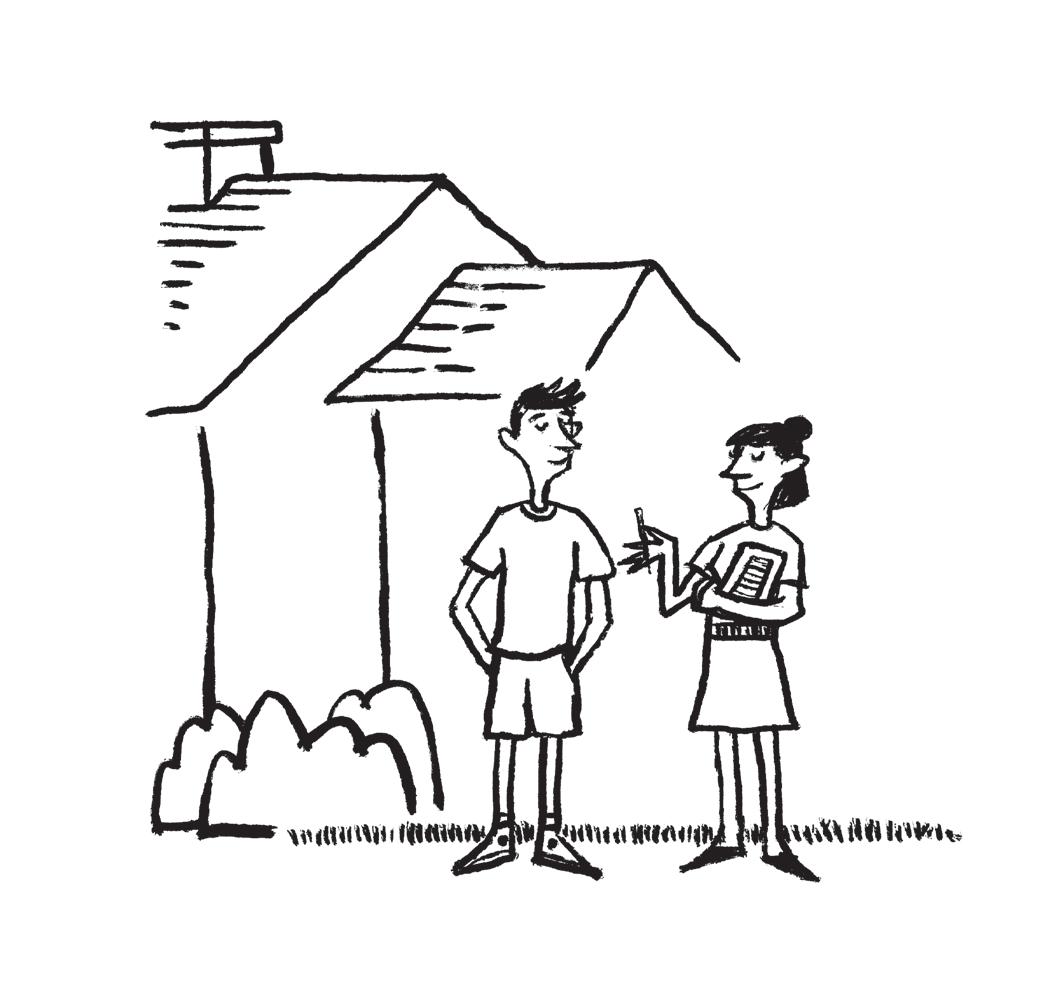
· Light, misty spray is more prone to evaporation and wind drift.
· Multi-stream, multi-trajectory nozzles or MSMT rotating pop-up nozzles can be thought of as a hybrid model.
· Nozzles can replace fixed nozzles on pop-up spray head bodies, but the delivery of water is more dense and controlled than a standard spray head nozzle.
· Ideal for areas 8’-30’ wide.
· Delivers about 0.65 inches of water per hour.
· The most water-efficient choice for Bozeman’s clay-rich soils.
· MSMT pop-up nozzles qualify for a rebate from the City of Bozeman.
For more information about the City of Bozeman’s Landscape and Sprinkler System Rebate Program, see page 15 of this guide or visit bozemanwater.com and click the Water Conservation button.

The vast majority of Bozeman residents have automatic in-ground sprinkler systems. These systems can save water — but only if they are maintained and operated properly.
Your sprinkler system can use more water in a week than your family uses inside your home in a month. Small adjustments to your sprinkler system can mean big water savings. Take a few minutes to dial in your spray before the heat of summer.
Misting from your sprinkler heads can be the result of high operating water pressure in your sprinkler system. Pressure regulating sprinkler bodies can be installed to reduce excessive pressure within your sprinkler system. These pressure regulating sprinkler bodies come equipped with an integral pressure regulator that allows the sprinkler head to operate near optimal pressure.
The end of September through mid-October is the best time to turn your sprinkler system off and have it blown out. Blow-outs help eliminate cracks, leaks, and other damage from freezing temperatures over the course of the winter.
In spring, run each zone for 2-3 minutes to make sure everything is working properly. Many controllers have an automatic test setting just for this reason. Use this checklist to observe and ask yourself these questions, then adjust as needed:
❏ Are any sprinkler heads or nozzles broken, clogged, or misaligned?
❏ Are all rotating sprinkler heads or nozzles rotating as intended?
❏ Are all of the sprinklers popping up to their intended height?
❏ Are any sprinklers tilted relative to a flat surface?
❏ Are any sprinklers being obstructed by tall grass, plants, trees, fences, etc.?
❏ Are any sprinkler heads misting (high operating water pressure may cause this)?
❏ Do the sprinklers in each zone have consistent spacing?
❏ Does each zone have head-to-head coverage (where each sprinkler is throwing water to the next one)?
❏ Do all sprinklers have an effective arc? Do they rotate too much or too little?
❏ Do all sprinklers have an effective throw distance? Is there any over-spray onto pavement?
❏ Do the sprinklers in each zone have matched precipitation rates (inches of water applied/hour)?
The City of Bozeman offers FREE Sprinkler System Assessments*. Our trained staff will check your sprinkler system and develop a customized report, including system repair needs, how to improve system efficiency, and customized watering schedules. Space is limited, sign up early. Call 406-582-3220 to schedule your assessment. DIY Sprinkler System Assessment Kit rentals are also available from the City of Bozeman.
Broken or damaged sprinkler components
· Spewing water
· Water pooling
· Water flowing quickly
· Low pressure
· Heads that might be trickling
· Minor sputtering
· Replace broken nozzle or sprinkler body.
· Replace broken or damaged piping below the surface.
· Remove nozzle/filter and clean any debris before replacing.
Mixed sprinkler head types within a zone
Sunken or buried sprinkler heads
Tilted or misaligned sprinkler heads
· Different sprinkler head types within the same zone. Drip, pop-up spray, and rotor sprinkler heads should all be on separate zones to ensure water is being applied evenly within the zone area.
· Heads that are not visible (below ground surface) when system is off.
· Heads that cannot spray above the surrounding turf.
· Heads are not upright and aligned perpendicular to the ground.
· May be indicated by yellowing areas (hot spots) or overthrow onto pavement.
· Select the most appropriate sprinkler head type for the zone and replace any sprinkler head types that do not match with the selected type.
· Dig up sprinkler body until you reach the main connection pipe and install appropriate extension/ riser between the main pipe and sprinkler body.
· Dig up sprinkler head and align the body upright in the ground — this may require the installation of additional soil for support.
Obstructed sprinkler heads
· Shrubs, trees, plant limbs, lamp posts, electrical boxes, fences, furniture, toys, and mailboxes that might be in the path of sprinkler head’s throw.
· Water between 4am and 8am, since water evaporates during the middle of the day.
· Turn off your sprinkler system when it rains, or install a rain sensor to do it for you.
· Avoid watering during high winds.
· Try taking two minutes off the watering times for each zone. If that works and your lawn stays green, take off another two minutes.
· Water only when your lawn needs it. Watering three days per week is more than sufficient.
· Adjust watering times throughout the season. A good rule of thumb is 1 to 1.5 inches of water per week during peak season (July and August). Water less in May and June, and by Labor Day, reduce watering to once per week to prepare grass for dormancy.
· Remove the obstruction if possible or move the head away from the obstruction — turf removal surrounding the obstruction might also be an option if the sprinkler zone is converted to drip irrigation for additional plantings (see landscape makeover page 16-19).
· Check your sprinkler system for leaks, broken, or misaligned nozzles and repair within seven days.
· Raise your mower blade! Keep your grass at least three inches long to keep the soil cool. This also helps the soil retain moisture.
· Water deeply and infrequently to encourage deep root development.
· Avoid letting water pool in gutters, streets and alleys.
· Keep water from spraying on concrete and asphalt.
· If you use a hose to water, install a spray nozzle to control the rate of flow.
· Check your drip system for leaks.
· Visit bozemanwater.com for more tips.
Keep your landscape green, save water, save money, and get some cash back too. When you remove turf, plant drought-tolerant plants and grasses, or install qualified sprinkler products, the City of Bozeman will reward you with a rebate.* But that’s not the only advantage — these incentives can help lower your water bills too.
· WaterSense® Labeled Smart Controllers use local weather and landscape conditions to make decisions about when and for how long to water to better match plants’ water needs. These controllers can be retrofitted to work with existing systems. Some are internet based and include apps to make it fun and easy to adjust sprinkler settings whether you are at home or away.
· Multiple Stream Multiple Trajectory (MSMT) and H2O Chip Technology Nozzles deliver water more efficiently than fixed spray nozzles. With fixed spray nozzles, 50% of the water can be lost to evaporation and wind drift. Plus, these nozzles can easily replace your existing pop-up spray heads.
· Rain Sensors override the sprinkler system when a certain amount of rain has fallen to shut off the system. When the sensor dries, it opens the connection to allow the system to resume normal operations.
· Drip Irrigation delivers water directly to plants — targeting the roots and minimizing water lost to evaporation and wind drift.
· Drought-Tolerant Plants require less maintenance than turf grass and use 75% less water. Plus, they are beautiful and can add a big splash of color to your landscape. All shrubs, perennials, and grasses listed on pages 20-31 of this guide qualify for our Rebate Program.
· Turf Removal is an incentive for you to remove high water use turf grass and replace it with low or no water use permeable cover.
Need a boulevard tree?
Visit bozeman.net/forestry for more information.
Landscape and Sprinkler System Rebate Program Amounts*
Products
Retrofit to existing system

WaterSense® Labeled Smart Controllers $250
Multiple Stream Multiple Trajectory (MSMT or rotary) and H2O Chip Nozzles $6/nozzle
Rain Sensors $50
Drip Irrigation $250
Drought-Tolerant Plants and Grasses
(qualifying products are listed on pages 20-31 of this guide) $100 — $200
Turf Removal
(Min. 100 SF/Max. 2,000 SF removed for rebate to apply; must submit pre-application/obtain approval prior to project start) $1/square foot
*Rebateamountsdifferfornewconstruction.Rebateamountnottoexceedpurchaseprice. RebatesareonlyavailabletocustomersusingCityofBozemanwaterforoutdoorwatering.
For more information about the City of Bozeman’s Landscape and Sprinkler System Rebate Program, visit bozemanwater.com and click the Water Conservation button.
WATER SMART BOZEMAN.
City
of Bozeman
Ready to roll up your sleeves and put the water smarts you've soaked up through this guide to work? Use this step-by-step guide to transform your thirsty turf into a colorful, drought-tolerant wonderland. You'll learn how to remove turf, convert sprinkler heads, select plants, and install your new landscape.
Get the most bang for your backyard buck when you use the City’s turf removal, drought-tolerant plant and drip irrigation rebate programs while you DIY your way to an OMGorgeous landscape.
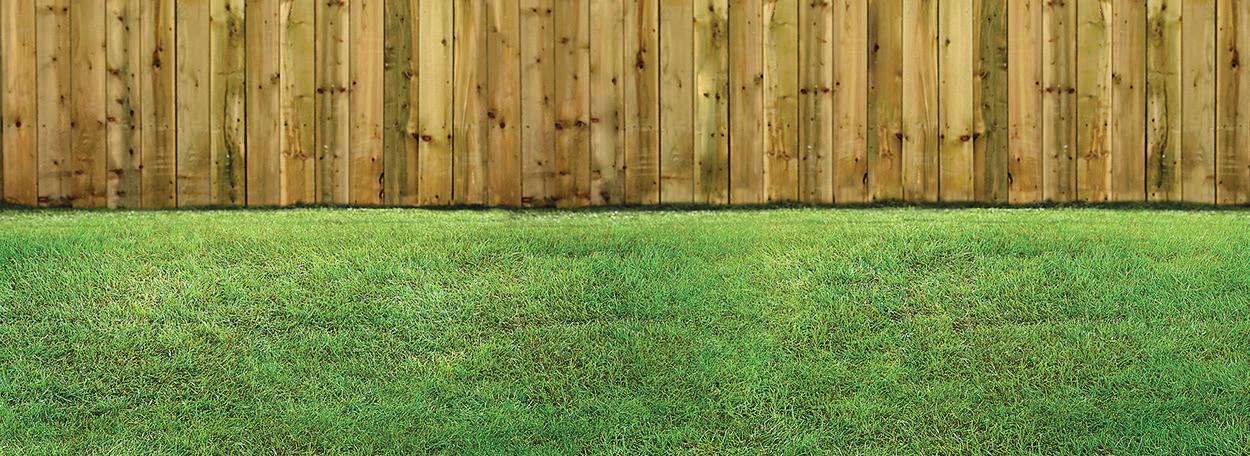
Thinking through your drought-tolerant landscape before you start planting can pay off big-time later.
1. Draw a map of your property (see page 19).
· Note trees, fences, walkways, and buildings.
· Indicate areas of sun and shade.
· Study drainage patterns and note sloped areas.
2. Think about how each area will be used. Consider:
· Outdoor living and play areas.
· Pathways and visual barriers to create privacy.
· Access to and ease of mowing grass areas.
· If your yard is sloped, terraces reduce erosion and runoff.
· Trees and shrubs located near buildings offer heating and cooling.
Familiarize yourself with drought-tolerant plant choices.

· The Bozeman area is USDA Hardiness Zone 4. Select plants that are listed as Zone 4 or lower. These plants will thrive in Bozeman’s climate based on Bozeman’s annual minimum winter temperature.
· Consider the height, spread, bloom time, color, form and function of plants to make sure they fit your project’s space and purpose.
· Consider how much sun your DIY space gets and choose plants that won’t need supplemental watering.
· The drought-tolerant plant guide, starting on page 20, will help kick-start the selection process.
· Visit one of our community gardens (see page 4) for inspiration.
Now that you have identified areas of your landscape to convert to drought-tolerant plants, make some space by removing your existing turf grass. To earn money back from the City for your turf removal, complete a turf removal pre-application to get pre-approval from the City before starting your project. Below are two methods for removing sod to create a water smart landscape. When removing turf around existing trees, carefully hand-dig to avoid damaging tree roots. Replace the turf removed around trees with wood chip mulch to benefit tree health and improve watering efficiency.

This method provides instant results and is the most efficient method for permanently removing turf grass.
1. Based on your plan and design, outline the grass area that needs to be removed. You can use a garden hose, string, or anything that can clearly define the edges of the project area.
2. Contact your utility services and flag all sprinkler heads before digging to avoid damage to your utility lines or sprinkler system.
3. Hand dig a trench next to sidewalks, driveways, corners, and any other areas that might be difficult to access with the sod cutter.

4. Reserve a sod cutter available for rent (or use a garden spade and/ or broad fork) to cut the turf into narrow strips and roll them up as you go.
5. Some options for the turf you’ve removed:
· Convert it to compost (see page 7).
· Salvage the soil. Turn the turf upside down, water thoroughly, then cover with cardboard, a layer of compost, and then a top layer of mulch. Water this landscape lasagna thoroughly again. It may take up to two full summer seasons before grass dies off and you can use the dirt in other projects.
This turf removal method is best suited for flat, small to medium-sized areas, but could take 1-2 seasons before it is ready for conversion into a water smart landscape.
1. Based on your plan and design, outline the grass area that needs to be removed. You can use a garden hose, string, or anything that can clearly define the edges of the project area.
2. Cut the grass in the project area as short as you can, leaving the grass clippings in place and water thoroughly after mowing.
3. Locate all sprinkler heads in the area and cap them, turn off the sprinkler system zone, or convert to a drip irrigation system (see page 18).
4. Apply a layer of compost over the grass (1” if animal based, 2-3” if plant based) and water thoroughly.

5. Block light on the area by covering with painter’s paper, newspaper, or cardboard making sure to overlap the edges by 6-8”.
6. Add another layer of compost over the light blocking layer.
7. Cover the entire area with wood mulch and water thoroughly.
8. Wait for grass to die off completely before planting.
Chances are, the sprinkler system in the area you’re converting to a water smart landscape isn’t ideal for the drought-tolerant plants you’ll be installing. If you removed turf, the rotor or spray irrigation left behind should be converted into drip irrigation to optimize water savings and the health of your new landscape.
TIP: If you have an older irrigation system, we recommend checking the specifications on your automatic irrigation zone control valve before starting your project to make sure the existing valve can handle the low flow rate of the new drip system.
Drip Conversion Kit:
· ½” female to male conversion elbow
· 1/2" drip tubing
· T filter (with male thread facing downward near the ground)
· Pressure regulator attached to the T filter
· Swivel hose tubing adapter (attached to pressure regulator)
Now is when all the planning and groundwork you’ve done can come to life. Here are some tips for success:
· Purchase plants when you have time allotted to plant them.
· Before planting, give your soil some amendment love (see compost on page 7).
· Dig holes to match your plant’s depth and 2 times the diameter of the pot it’s in.
· Plant in morning or evening to reduce stress from the sun.
· Gently loosen the plant from the container by turning it upside down and squeezing the container’s base while you help release the plant from the pot.
· Place your plant in the hole, then fill 1/3 of the way up with soil around the sides, add water and repeat until the soil meets the base of your plant. The extra layers of water will help alleviate the stress of being placed in a new environment.
· If needed, add emitters to the drip line to target plant roots.
· Add mulch to finish off your landscaping. See page 7 for mulch tips.
· Prune shrubs and trees when they are dormant. Pruning during the growing season will spur growth and increase watering needs.
· Avoid pruning more than 1/3 of the plant material at any one time.
· Weed regularly to leave more water and nutrients available for your plants. Weeding in spring and fall is best.
· Add mulch to your landscape bed (about 2-3” in depth) to hold in soil moisture.
· Check your sprinkler system for leaks and repair as needed.
· Deadhead perennials throughout the summer months to keep them blooming.
· Use the grid at right to draw a map of your property.
· Start making a list of plants you want to use, see the Plant Lists on the following pages to determine what plants will work best for your new landscape.

So you’re ready to dig in and get water smart. The aisles of the local nurseries might look like a labyrinth at first, but this guide can help you navigate your way to successfully installing a beautiful watersaving yard.
ABOUT THE PLANT GUIDE
On the following pages is an introduction to many of the droughttolerant species that thrive in Bozeman’s climate and generally don’t need extra watering once established. We’ve also included water smart species that will only need watering during hot and dry conditions. Wondering what the difference is?
DROUGHT-TOLERANT PLANTS (PAGES 22-27)
These plants generally don’t need extra watering after the plant is established, unless there is a long dry spell. Plants are considered “established” usually two to three seasons after planting.
WATER SMART PLANTS (PAGES 28-31)
These plants can withstand periods without supplemental water but will need deep watering during hot and dry conditions.
We’ve also included important information about the types of plants (shrubs, perennials, grasses), sunlight needs and tolerance, pollinator information, and if the plant is deer-resistant. Watch for these symbols as you review the following pages.
The plants on the following pages are organized in Drought-Tolerant and Water Smart categories. To help you plan for specific parts of your landscape, we have organized the same plant lists by categories of full sun plants, part sun and shade plants, and ornamental grasses and vines.
FULL SUN PLANT LIST
(ALPHA BY COMMON NAME)
22 Mockorange, Lewis*
22
28 Mountain Mahogany, Curl Leaf*
24
29
24
ORNAMENTAL GRASSES AND VINES LIST (ALPHA BY COMMON NAME)
All shrubs, perennials, and grasses listed in this guide qualify for rebates as part of the City of Bozeman Landscape and Sprinkler System Rebate Program.
Download a comprehensive City of Bozeman Plant Rebate Shopping List form to help you purchase plants, save money, and save water. To find the City of Bozeman Plant Rebate Shopping List, click on the Water Conservation button at bozemanwater.com.
PLANT REBATE IN 4 SIMPLE STEPS:
1. Spend between $100 and $200 on qualifying plants.
2. Install plants.
3. Submit rebate application with proof of purchase and installation.
4. Receive rebate.
For more information, click on the Water Conservation button at bozemanwater.com.
*Must be a City of Bozeman water customer. Vines listed in this guide do NOT qualify for the City of Bozeman Rebate Program.
Drought-tolerant plants should not require supplemental water once the plant is established two to three years after planting. This does not apply during periods of prolonged drought.
No. Common Name Scientific Name Notes
1. Buffaloberry, Silver* Shepherdiaargentea Large silver leaf shrub, orange berries on female plants, thorny
2. Caragana, Pygmy Caraganapygmaea Fine textured, lower growing caragana, yellow flowers
3. Caragana, Siberian Caraganaarborescens
4. Chokecherry* Prunusvirginiana

5. Cotoneaster Peking Cotoneasterapiculatus
6. Golden Currant* Ribesaureum
Also known as "Siberian Peashrub," often used as a hedge or windbreak plant, yellow flowers attract hummingbirds

Tall shrub with white flowers and edible berries, will sucker but can be pruned into multi stem shrub
Also known as "Cranberry Cotoneaster," tall shrub that is usually hedged, black berries and glossy foliage


Can be pruned into a medium height hedge, early blooms benefit pollinators, edible berries
7. Juniper Common* Juniperuscommunis Soft foliage, low spreading form
8. Junipers* Juniperusspp. Many cultivars and species, evergreen foliage

9. Kinnikinnick* Arctostaphylosuva-ursi Low spreading groundcover, one of our only broadleaf evergreens
10. Lilacs Syringaspp. Many cultivars and species, fragrant flowers
11. Mountain Mahogany, Curl Leaf* Cercocarpusledifolius Large evergreen shrub, likes soils with good drainage

12. Oregon Grape* Mahoniarepens

Holly-like foliage, somewhat evergreen, foliage can brown over winter but pruning will renew
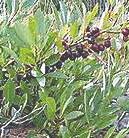
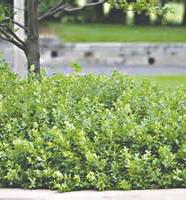
13. Potentillas* Potentillafruticosa Long blooming, compact shrub, lots of cultivars
14. Rabbitbrush, Dwarf Blue* Ericamerianauseosa
Also known as "Chrysothamnusnauseosus/Rubber Rabbitbrush," stays dense and low without pruning, fall blooming
15. Rabbitbrush, Green or Yellow* Chrysothamnusviscidiflorus Green leaves, prune in early spring to keep compact, fall blooming

16. Rabbitbrush, Silver* Ericamerianauseosa
17. Rose, 'Harison's Yellow' Rosaharisonii
18. Rose, Woods* Rosawoodsii
19. Sagebrush* Artemisiatridentata
20. Sagebrush, Silver* Artemisiacana
21. Sandcherry Western Prunusbesseyi
22. Sumac 'Gro-Low' Rhusaromatica
23. Sumac, Staghorn Rhustyphina
24. Sumac, Trilobe* Rhustrilobata
25. Yucca, Great Plains* Yuccaglauca
Also known as "Rubber Rabbitbrush," silvery leaves, prune in early spring to keep compact, fall blooming
Often found naturalized in historic landscapes, spreads by root suckers
Fragrant, pink flowers, edible rosehips, suckers to form thickets, best in naturalized settings
Can be pruned over time to keep interesting habitat. Montana subspecies: vaseyana,wyomingensis and tridentata
Good all season shrub, somewhat spreading
Early white flowers in spring and edible berries, 'Pawnee Buttes' is a low growing spreader
Also known as “Fragrant Sumac," nice low growing shrub, shiny green leaves in summer, turning red and orange in fall
Tall shrub, dramatic, airy structure, red-orange fall color, spreads by root suckers, good on dry slopes
Also known as “Skunkbrush Sumac," stays low in the wild due to grazing, but will grow tall in landscape situations
Also known as “Soapweed Yucca," very drought-tolerant, will form colonies
*indicatesplantsnativetoMontana.
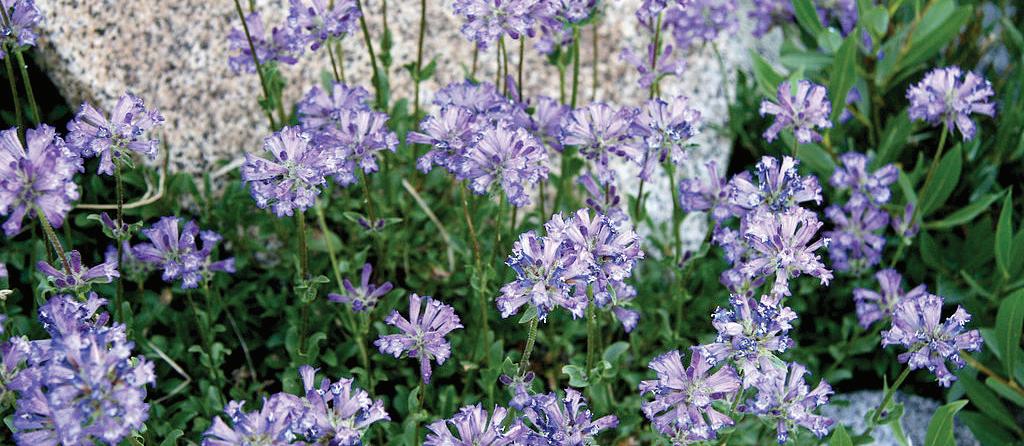
Drought-tolerant plants should not require supplemental water once the plant is established two to three years after planting. This does not apply during periods of prolonged drought.
No. Common Name Scientific Name Notes
1. Aster, 'Dream of Beauty' Symphyotrichum oblongifolium Forms a wide, tight mound, light pink flowers in fall, needs room
2. Blanketflower* Gaillardiaaristata Long blooming, several cultivars
3. Blue Flax* Linumlewisii
4. Buckwheat Sulfur* Eriogonumumbellatum
Sky blue flowers with semi evergreen foliage, short lived but will reseed
Forms tight mat over time, 'Kannah Creek' is a good cultivar, other species qualify
5. Cut-Leaf Fleabane Daisy* Erigeroncompositus Low mounding with small white daisy-like flowers
6. Gayfeather, Dotted* Liatrispunctata
7. Gumbo Lily* Oenotheracaespitosa
Also known as “Dotted Blazing Star," needs good drainage but once established can be long lived, late blooming

Also known as “Evening-Primrose," low growing with fragrant flowers blooms from May through August, can be short lived but reseeds
8. Hen and Chicks Sempervivumspp. Also known as “Houseleek," many species/cultivers, succulent leaves
9. Hollyhocks Alceahybrids
10. Iris, Bearded Iris hybrids

Tall, short lived perennial that reseeds readily, Alcearugosais longest lived
Can take very dry conditions, need to be divided when they form tight clumps
11. Pale Purple Coneflower Echinaceapallida Great plant for butterflies
12. Pearly Everlasting* Anaphalismargaritacea Long lived, will form a large mound over time, needs good drainage
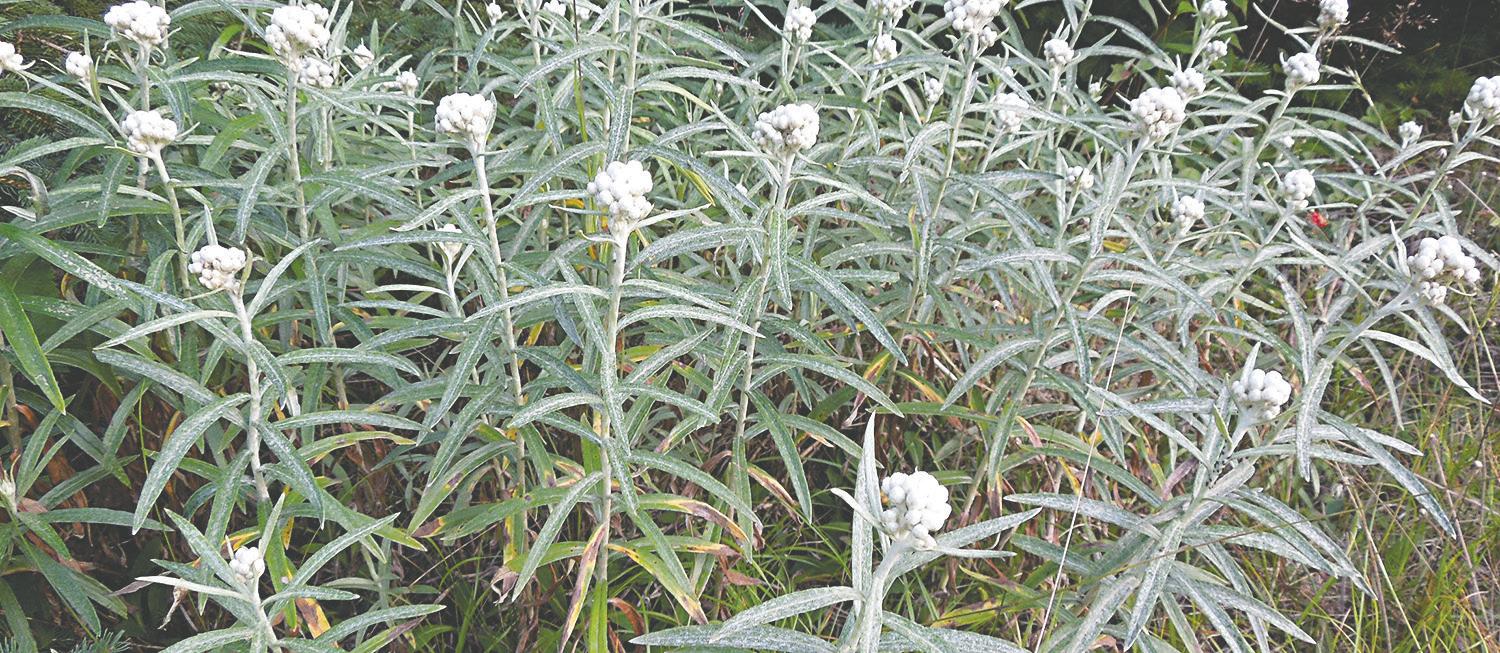
13. Penstemons* Penstemonspp.
Wide range of native Penstemons, Drought-Tolerant, important pollinator plant, all species/cultivars qualify
14. Peonies Paeoniaspp.
Even though they might not grow as large or bear as many flowers, this plant can survive without supplemental water! All species/cultivars qualify
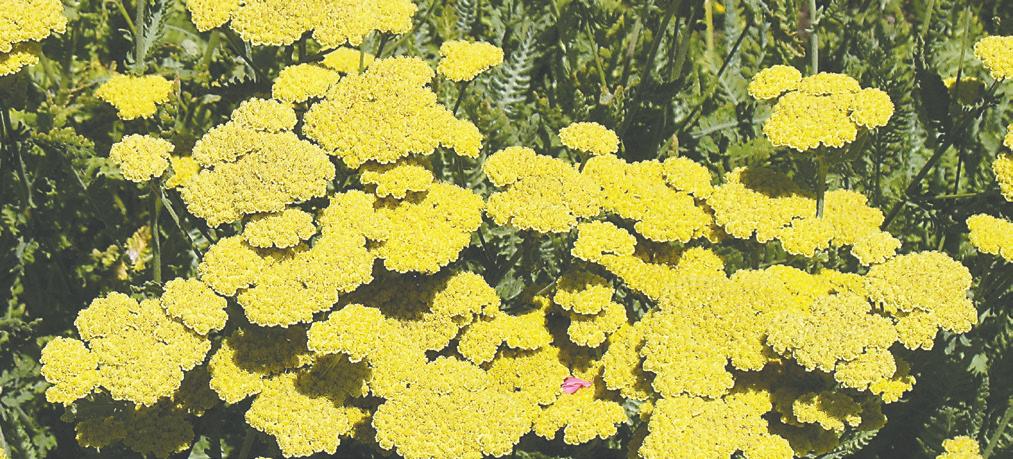
15. Prairie Coneflower* Ratibidacolumnifera Upright, airy, mid to late summer blooming, short lived but reseeds

16. Prairie Smoke* Geumtriflorum
Low growing, very distinctive feathery seedheads, a common name for this could also be “Old Man’s Whiskers"
17. Purple Prairie Clover* Daleapurpurea Magenta spikes above ferny foliage, midseason bloomer

18. Pussytoes* Antennariamicrophyllaand rosea Low, silver-leaf, mat-forming groundcover, can take some shade
19. Russian Sage Perovskiaatriplicifolia Tall plant with silver foliage and lavender like flowers
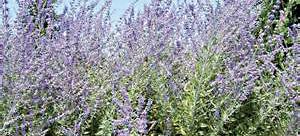
20. Sage, Meadow Salvianemorosa Long lived, lots of cultivars
21. Scarlet Hummingbird Flower Zauschneriagarrettii
22. Sedums Sedumspp.
23. Soapwort 'Max Frei' Saponarialempergii
24. Yarrows Achilleahybrid
Bright scarlet-orange trumpet flowers bloom mid season through fall, can spread
All species/cultivers qualify, short ground covers and taller plants, succulent leaves
Low growing, later blooming, soft pink blooms, saponaria occymoides also included
Moonshine is a good cultivar, the native white yarrow is invasive, other culitvars also qualify
*indicatesplantsnativetoMontana.
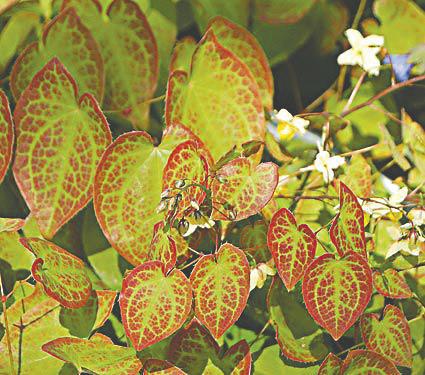


Drought-tolerant plants should not require supplemental water once the plant is established two to three years after planting. This does not apply during periods of prolonged drought.
No. Common Name
1. Alumroot, Roundleaf*

2. Barrenwort, Bishops Hat
Scientific Name Notes
Heucheracylindricaand rotundifolia Spikes of creamy flowers attractive to hummingbirds
Epimediumxversicolor sulpherium
Mainly a foliage plant, this species is hardy in Montana, good groundcover under trees
3. Columbines Assorted Aquilegiaspp. All species and cultivars qualify, long blooming, some native

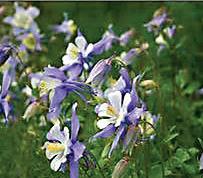
4. Lamium 'Hermans Pride' Lamiumgaleobdolon Variegated foliage and yellow flowers
5. Penstemon Little Flower* Penstemonprocerus Mat forming, early bloom, longer lived than most
6. Snow on the Mountain Aegopodiumpodagraria
Borders on invasive, needs to be in contained area but will grow in difficult dry shade
*indicatesplantsnativetoMontana.
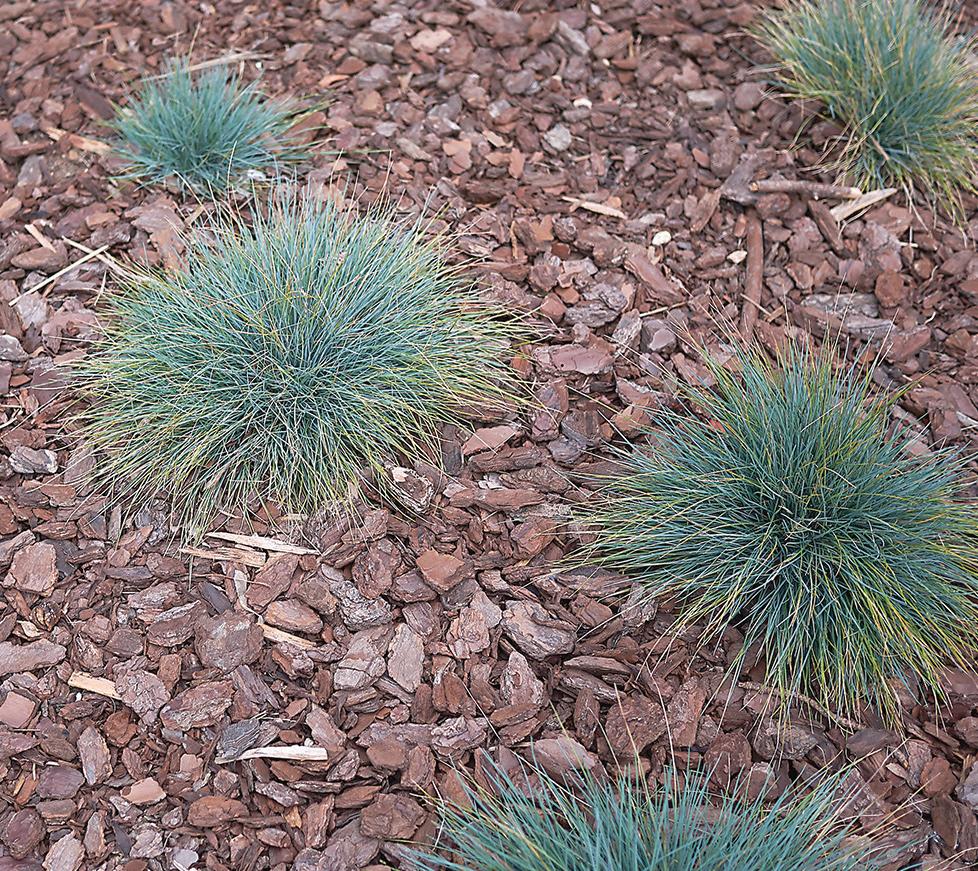
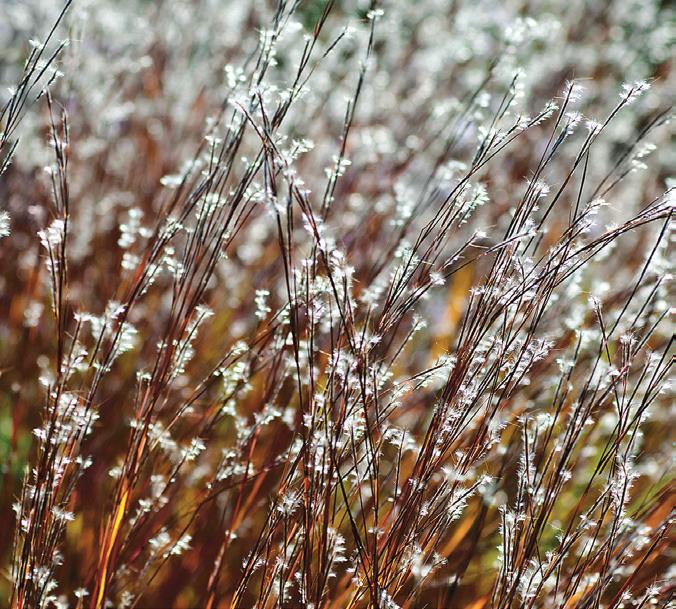



Drought-tolerant plants should not require supplemental water once the plant is established two to three years after planting. This does not apply during periods of prolonged drought.
No. Common Name Scientific Name Notes
1. Big Bluestem*
Andropogongerardii Tall, erect bunchgrass, may turn reddish to bronze in fall
2. Blue Grama* Boutelouagracilis Forms dense tufts with unique one-sided seedheads, 'Blonde Ambition' taller cultivar
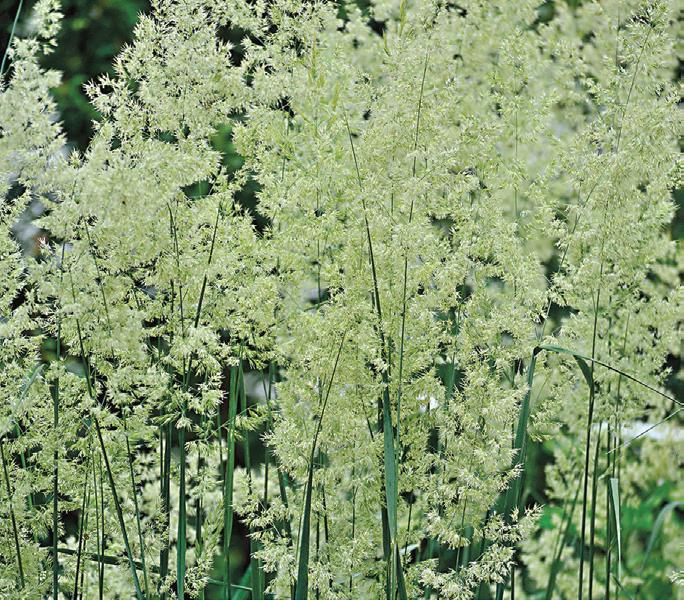
3. Fescue Blue Festucaglauca Tidy blue clump throughout the summer, all cultivars qualify
4. Fescue 'Siskiyou Blue' Festuca hybrid Blue foliage
5. Little Bluestem* Schizachyriumscoparium Greens up later in spring, red fall color
6. Prairie Junegrass* Koeleriamacrantha Shorter growing bunchgrass, blooms early
Boutelouacurtipendula Distinctive seedhead

Water smart plants can withstand long periods without supplemental water but will need deep watering during prolonged hot and dry conditions.
Scientific Name Notes
1. Apache Plume Fallugiaparadoxa

Very irregular shape, white flowers form silky seed heads that persist all season
2. Barberries Bergeristhunbergii Lots of cultivars, some with red foliage, dense branching
3. Fernbush Chamaebatiariamillefolium
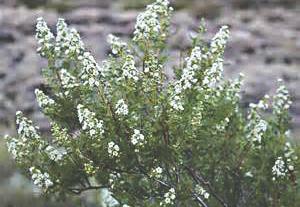
Soft fernlike foliage and white flowers, uncommon but very hardy
4. Mockorange, Lewis* Philadelphuslewisii Fragrant white flowers, taller, several good cultivars
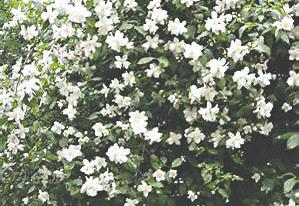

5. Pine, Mugo Pinusmugo Evergreen shrubs, lots of cultivars and sizes
6. Serviceberry, Western* Amelanchieralnifolia
Also called Juneberry, early white flowers, edible berries and red fall color
7. Spirea Birchleaf 'Tor'* Spiraeabetulifolia Smaller shrub with white flowers and orange fall color
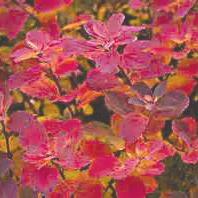
8. Spirea 'Bridalwreath' Spiraea×vanhouttei Cascading white flowers in spring, orange fall color
9. Viburnum Wayfaring Tree Viburnumlantana White flower clusters, blue to black berries, velvety leaves
11. Currant Greenmound Ribesalpinum
10. Daphne ‘Carol Mackie’ Daphnexburkwoodii
Also known as “Mountain Current," likes afternoon shade, variegated foliage and fragrant pink flowers in early spring
Can also take sun, dense branching, short mounding shrub, Alpine Currant included *indicatesplantsnativetoMontana.

Water smart plants can withstand long periods without supplemental water but will need deep watering during prolonged hot and dry conditions.
No. Common Name
Scientific Name Notes
1. Alliums, Ornamental Alliumspp.
Most of the ornamental alliums are Water Smart, 'Summer Beauty' is a sterile hybrid
2. Alyssum 'Basket of Gold' Auriniasaxatilis Low growing, early yellow blooms, needs good drainage to persist

3. Butterflyweed Asclepiastuberosa
Bright orange flowers, needs well drained soil, spreads somewhat but not in any way invasive


4. Catmints Nepetaxfaassenii Long blooming, likes hot dry places, all species/cultivars qualify
5. Coreopsis 'Zagreb' Coreopsisverticillata Long blooming yellow flower, forms delicate clumps
6. Evening Primrose, Missouri Oenotheramissouriensis Large yellow flowers in mid summer, low growing
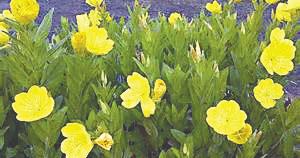
7. False Indigo Baptisiaaustralis
Large, shrub-like plant, long lived, Lupine-like spikes of blue flowers in spring
8. Globe Thistle Echinopsritro Tall plant with distinctive deep blue globe shape flowers
9. Lambs Ears Stachysbyzantina Low growing, wooly silver foliage, non-flowering cultivars recommended
10. Lavender 'Munstead' Lavandulaangustifolia Fragant flowers and leaves
11. Penstemon 'Husker Red' Penstemondigitalis
12. Penstemon Pineleaf Penstemonpinifolius
Burgundy-bronze foliage with spikes of whitish flowers, longer lived than most Penstemons
Likes good drainage, striking orange blooms later in season, 'Mersea Yellow' has yellow flowers
13. Purple Coneflowers Echinaceapurpurea Lots of cultivars available/qualify
14. Sea Lavender Limoniumlatifolium Clouds of fine flowers in mid summer, salt tolerant
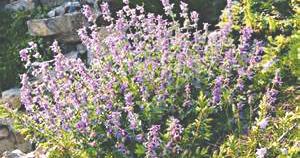
15. Snow in Summer
Cerastiumtomentosum Low growing, silver foliage, white blooms, spreads
16. Thymes, Creeping Thymusspp. Ground covers, ornamental species/cultivars qualify
17. Veronica, Turkish Veronicaliwanensis Very low growing ground cover, Sky blue flowers
Water smart plants can withstand long periods without supplemental water but will need deep watering during prolonged hot and dry conditions.
No. Common Name Scientific Name Notes
1. Coral Bells Heucheraspp. Many species and cultivars, 'Firefly' attactive to hummingbirds
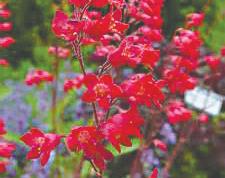
2. Coral Bells 'Snow Angel' Heucherasanguinea Interesting variegated foliage
3. Geraniums, Big Leaf Geraniummacrorrhizum Spreading groundcover, 'Ingwersen's Variety' most drought-tolerant
4. Geranium 'Biokovo' and 'Karmina' Geraniumcantabrigiense Great groundcover for shady places


5. Harebells* Campanularotundifolia Forms colonies, delicate blue flowers
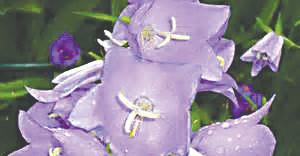
6. Lamiums Lamiummaculatum Low growing, variegated leaf, many cultivars
7. Pasqueflower* Anemonepatens One of the earliest bloomers, Crocus like flowers, silky seedheads, good foliage the rest of season
8. European Pasqueflower Anemonevulgarus Same characteristics as native, larger growing
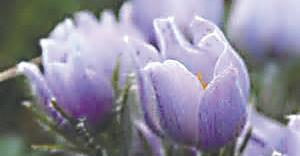
*indicatesplantsnativetoMontana.
All shrubs, perennials, and grasses listed within this guide qualify for rebates as part of the City of Bozeman Landscape and Sprinkler System Rebate Program. Visit bozemanwater.com for more details.
Water smart plants can withstand long periods without supplemental water but will need deep watering during prolonged hot and dry conditions.
No. Common Name
Scientific Name Notes
1. Blue Oatgrass Helictotrichonsempervirens Blue foliage color, large bunchgrass, needs space

2. Feather Reedgrass Calamagrostisxacutiflora Several cultivars, tall upright
3. Korean Feather Reedgrass Calamagrostisbrachytricha Lovely plumed seedheads in fall
4. Prairie Dropseed Sporobolusheterolepis Lower growing clump, fine foliage, airy seedheads
5. Switchgrass* Panicumvirgatum Several cultivars, tall upright, seed heads later in season


6. Tufted Hairgrass* Deschampsiacaespitosa Several cultivars, frothy seed heads
Water smart plants can withstand long periods without supplemental water but will need deep watering during prolonged hot and dry conditions. These Water Smart Vines do not qualify for the Plant Rebate Program
No. Common Name
Scientific Name Notes
1. Clematis, Golden Clematistangutica Prolific flowers and lacy seed heads, can reseed

2. Grape Vitis hybrid 'Valiant' hardy cultivar, edible berries
3. Honeysuckle Dropmore Scarlet Lonicerabrownii Scarlet-orange tubular flowers, attract hummingbirds
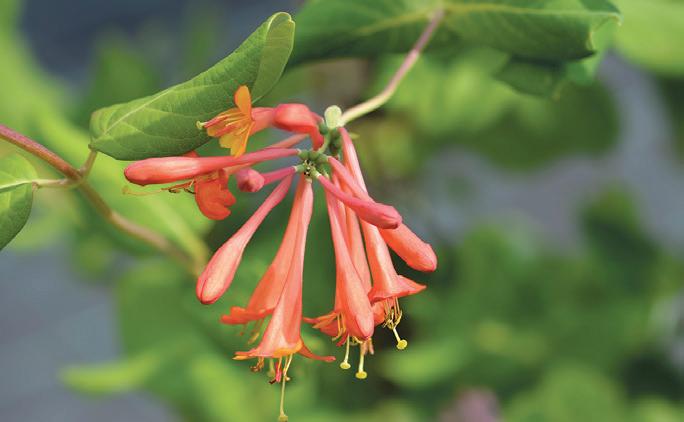
4. Honeysuckle Kintzley Ghost Lonicerareticulata Very full and fast growing, yellow flowers and blue-green foliage
5. Hops Humuluslupulus Yellow-green flowers with papery cone-shaped fruits, lots of cultivars
6. Virginia Creeper Parthenocissusquinquefolia Clings to fences and masonry, black berries and red fall foliage

Did you know your sprinkler system can use more water in a week than your family uses inside your home in a month?

Making small adjustments to your sprinkler system run times can result in big adjustments to your water use and the water rate tier your use falls within.

Dropcountr will provide water efficiency goals based upon the watering needs of your landscape. It’s simple:

· Select “sprinkler system” in your Dropcountr profile
· A water use goal for your property will be displayed
· The goal will adjust each month based on temperature, precipitation, and your lawns watering needs. Download for free from your device’s app store or get started at www.dropcountr.com/bozeman. Call 406-582-3220 for more information.


